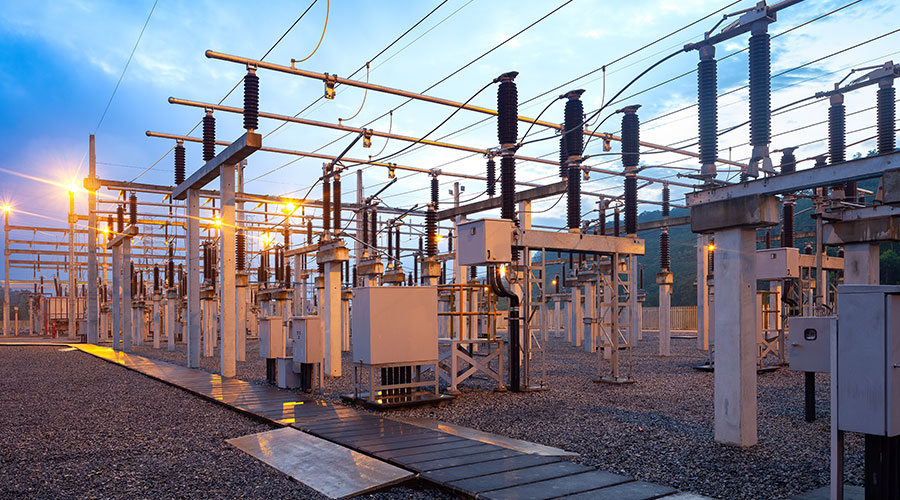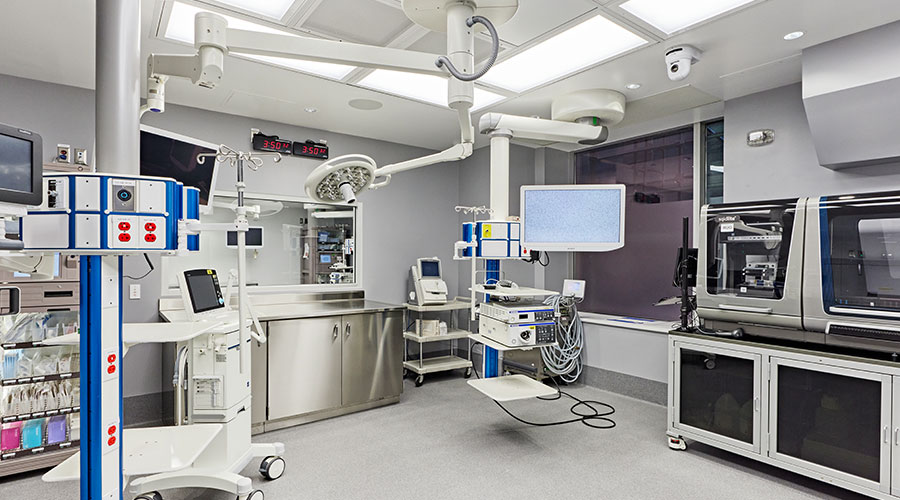Electrification — the switch to using electricity rather than fossil fuels for heating, cooling and other critical facility operations — is an emerging trend within the healthcare sector given the industrywide push toward sustainability. Benefits such as reduced carbon emissions and lower operational costs make projects like the new $125 million, all-electric Prosser Memorial Health Hospital in Washington viable.
When considering the operation and maintenance of all-electric central plants in healthcare facilities, managers need to account for several factors to ensure the plant’s efficiency, reliability and safety while also meeting healthcare standards and code requirements. Below are eight fundamental considerations based on key lessons from the Prosser Memorial Health Hospital project and other all-electric healthcare facilities:
Energy efficiency and reliability
Electric boilers tend to have higher efficiencies than gas boilers because they do not have the combustion losses associated with gas-fired units. This benefit makes them attractive options for healthcare facilities aiming to reduce their carbon footprints and energy use. Given that electric boilers generally have lifespans longer than 30 years, their longevity reduces the frequency of replacement, offering long-term savings in capital costs.
Code-required heating needs typically demand a certain level of redundancy to ensure constant heat availability. For electric boilers, redundancy is often achieved by using two power sources:
- Normal utility power. Main electricity supply from the local grid.
- Alternate emergency power. Backup power, typically provided by generators, ensures continued operation during power outages. This makes electric boilers a more flexible option because they do not rely on gas, which might be disrupted during a disaster.
Space and installation flexibility
Electric boilers have a smaller footprint than their gas counterparts, which can be a significant advantage in healthcare facilities where space is limited. This benefit might allow for a smaller central plant, possibly reducing construction costs and opening new areas for other critical systems.
Electric boilers can be installed in restrictive spaces, such as basements or areas without easy access to exhaust flues, that would be challenging for gas-fired systems. This also enables the potential for vertical expansion above the central plant, offering more flexibility in facility design.
Fuel storage and infrastructure
Gas and dual-fuel boilers often require fuel oil storage for backup. This need adds complexity in terms of space, fuel oil storage capacity and additional infrastructure, such as pumping and polishing systems. With electric boilers, these systems are not necessary, which simplifies maintenance and reduces the footprint needed for fuel storage.
Electric boilers also do not require exhaust systems or flues, which are necessary for gas-fired boilers to vent combustion byproducts. This can simplify the design and operation of the facility’s central plant and reduce associated costs.
Sustainability and incentives
Many healthcare facilities have sustainability objectives tied to reducing their environmental impact. Electric boilers can help fulfill these goals, especially if the electricity used comes from renewable sources, such as solar. This can contribute to the facility’s reputation as a leader in energy-efficient practices and enhance its sustainability credentials.
Electric utilities might offer incentives to promote the use of electric heating systems. These incentives could offset the initial capital costs of an all-electric plant and make the transition to electric systems more financially attractive.
Switching to electric heating systems also aligns with certification programs like LEED, which healthcare facilities can pursue for sustainability and marketing purposes.
Steam generation and distribution
For areas of the facility requiring steam, such as sterilization rooms and kitchens, electric steam generation can be deployed at the point of use. This benefit eliminates the need for a central steam plant, which can be costly to operate.
Reducing reliance on a central steam system also can significantly reduce maintenance requirements, including the need for high- or medium-pressure steam boilers, associated piping and safety equipment.
Additionally, on-demand steam generation improves energy efficiency because it produces steam only where and when it is needed and without the energy waste associated with distributing steam over large distances.
Maintenance and operations
Electric boilers typically require less maintenance than gas boilers. With no combustion process, there are fewer wear-and-tear issues related to the burners, combustion chambers and fuel supply lines. Even so, regular inspection and cleaning of the heating elements, controls and electrical components still are necessary to ensure efficient operation.
Although electric boilers eliminate the need for fuel-based maintenance, water treatment remains essential for preventing scale buildup and ensuring system longevity. Proper treatment also mitigates the risk of corrosion in the system.
Advanced monitoring and control systems can be integrated with electric boilers to optimize performance, reduce energy use and detect potential issues early. These systems also can interface with building management systems for seamless integration into overall facility operations.
Cost implications
The initial capital cost of installing electric boilers might be higher compared to gas boilers, especially when accounting for the need to upgrade electrical systems to support the additional load.
Electric boilers also might have higher operational costs because electricity is more expensive than gas. But these costs might be mitigated by energy-saving initiatives, demand-response programs and on-site renewable power generation, such as solar and wind energy. Operational savings, such as lower maintenance costs and no fuel oil storage requirements, can further offset costs over time.
Emergency and contingency planning
In the event of a power outage, backup generators must be in place to maintain heating and emergency services. Healthcare facilities managers must assess the reliability and capacity of its emergency power systems to ensure uninterrupted service.
The heating system must be integrated into the facility’s broader emergency response and contingency plans, ensuring the plant’s operation supports other critical functions, such as ventilation, medical equipment and sanitation.
All-electric central plants in healthcare facilities provide a promising option for meeting heating and steam generation needs while reducing operational complexity and improving sustainability. Their flexibility in installation, reduced need for fuel storage and potential for lower long-term maintenance make them attractive options. To ensure the facility’s energy needs are reliably met, managers need to carefully consider initial capital costs, energy prices and backup systems.
Joe Levin, P.E., LEED AP BD+C, is a health sector senior project manager at Henderson Engineers, a national building systems design firm.

 Building an Organ Regeneration Lab at UHN's Toronto General Hospital
Building an Organ Regeneration Lab at UHN's Toronto General Hospital Oracle Health Hit by Data Breach, Patient Data Possibly Compromised
Oracle Health Hit by Data Breach, Patient Data Possibly Compromised Ground Broken on New MD Anderson Sugar Land Facility
Ground Broken on New MD Anderson Sugar Land Facility Florida State University Reveals Plans for Panama City Beach Hospital
Florida State University Reveals Plans for Panama City Beach Hospital The Effect of Over-Cleaning on Human Health
The Effect of Over-Cleaning on Human Health